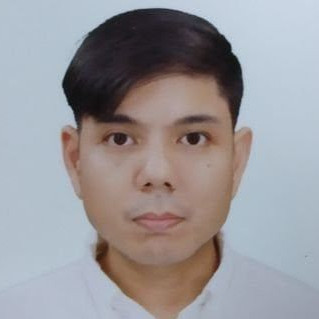

Owing to their profession as educators, the Mendoza couple led an itinerant life — “they went wherever they were sent” — and so did Estelito in his youth.
As recounted in his authorized biography, Forester of Nations & the Last Resort, Mendoza attended primary school at what is now the Barasoain Memorial Elementary School in Bulacan. He later transferred in Grade 5 to the Immaculada Concepcion Academy, run by the Holy Ghost Sisters, where the young Titong earned his first and only First Honors.
Guillermo and Barbra were eventually assigned to Manila, where the family patriarch assumed a post at the Vocational Education Division of the Bureau of Public Schools.
Here, Titong would find himself moving through several schools — from Lakandula Elementary in Solis, Gagalangin, Tondo, to Gomez Elementary School in Tayuman. The family eventually settled at Tecson corner Ramon Fernandez Streets in Tondo, where they built a two-story home, part of which was rented out. In time, additional apartment units were constructed for rental.
Entering the University of the Philippines, Harvard Law School
It was at the University of the Philippines where he completed his fourth year of high school, paving the way for his admission to the UP College of Liberal Arts as a scholar. He initially pursued first, pre-medicine in deference to his mother’s wishes, but later shifted to pre-law, which he completed in just two years.
“Titong [who was 16 years old] was one of the youngest if not the youngest pre-law students,” recounts former Supreme Court Justice Hugo Gutierrez Jr.
In 1952, Mendoza graduated cum laude with an L.L.B from the UP College of Law, counting as batchmates the likes of Associate Supreme Court Justice Flerida Ruth Romero, Justice Secretary Serafin Cuevas, Chief Justice Marcelo Fernan and Senator Joker Arroyo.
“As a student, he was a very quiet one. Late bloomer siya” said Froilan Bacungan, classmate and a former UP College of Law Dean. “At that time we did not recognize that afterwards he would be the best lawyer in the country.”
While waiting for the bar exam results, Mendoza found work at the law firm of San Juan, Africa, Yniguez and Benedicto, where he handled litigation cases involving sugar planters — among them Amading Araneta, the visionary behind the development of Araneta Center in Cubao, and then Vice-President Fernando Lopez.
“Right from the start he has really been a strategist,” Bacungan further said.
On April 7, 1953, Mendoza was admitted to the bar, registered in the Roll of Attorneys as No. 4441. A year later, with his parents “marshalling their resources toward that end,” he earned his Masters of Laws (LL.M.) from Harvard Law School — a choice he made over Columbia and Yale, as he found its location more conducive to learning. (Mendoza’s name is included in the Harvard Law School Report of Gifts: 2023, which lists alumni, friends, organizations and others who have supported the institution’s mission.)
Teaching Law
Fresh from graduate studies at Harvard, Mendoza entered the academe for what would become a two-decade-long stint — as “the most junior member of the faculty” at his alma mater, the UP College of Law. By this time, he was already married to Rosa Lilian “Rosie” Adams; they had wed in 1953 with Diosdado Macapagal, then a congressman, serving as one of the sponsors.
Rising from instructor to professorial lecturer, Mendoza at one point taught nearly 30 subjects across various branches of the law. Upon reaching senior faculty status, however, he focused primarily on Corporation Law and Evidence.
Among his many students were future Supreme Court Chief Justices Reynato S. Puno and Hilarion Davide Jr.
It was around this time, too, that Mendoza joined friends in forming the law firm of Campos, Mendoza, & Hernandez, where he served as chief litigator. He devised a plan that allowed him to effectively split his time between teaching and law practice.
Solicitor General, other government posts
In 1972, following the elevation of his predecessor, Felix Q. Antonio, to the Supreme Court, then President Ferdinand Marcos appointed Mendoza Solicitor General — a position he held until 1986.
“Martial Law got declared and I got stuck there,” said Mendoza in an interview with Ces Drilon. “He [Marcos] wouldn’t let me go.”
As Solicitor General, Mendoza was tasked by Marcos with defending the constitutionality of Proclamation 1081, which declared Martial Law. Yet, it was Javellana vs. Executive Secretary, et al. — which challenged the validity of the 1973 Constitution — that he considered his toughest case.
“Limang araw kami nag-aargue roon, oral arguments. Hanggang gabi.” (“We were there arguing oral arguments for five straight days. It went on into the night.) The resulting votes were even — four in favor and four against.
He later assumed other government positions, including serving as a member of the Board of Pardons and Parole, as Minister of Justice from 1984 to 1986, and as a member of the Interim Batasang Pambansa from 1978 to 1980.
Despite personal misgivings and having zero prior political experience, Mendoza accepted the role of Governor of the Province of Pampanga from 1985 to 1986 — persuaded by Marcos, who assured him of a guaranteed win under the ruling KBL party. Reflecting on the experience, he said, “I enjoyed being governor because that is the position in which you are in touch with people.”
As a member of the Board of Regents of the University of the Philippines, Mendoza was instrumental in naming Edgardo Angara as President upon the nomination by fellow Regent Ronaldo Zamora.
Lawyer of ECJ and Kapitan
Following the ouster of President Marcos in 1986, Mendoza returned to private life. Reflecting on that period, he remarked that when Marcos fell ill, “he should’ve yielded power in a peaceful and orderly way.”
After returning from self-exile in Marina del Rey in California, Mendoza resumed his private practice as a “sole practitioner,” assisted by lawyers and secretarial staff. For decades, he held office in the nondescript Dynavision Building in Legaspi Village, Makati, before relocating in 2016 to the sleek Tower 6789 on Ayala Ave.
While his first Supreme Court case was to compel the government to allow Marcos to return, he would soon focus his attention on two clients: Eduardo “Danding” Cojuangco Jr. and Lucio Tan — Marcos cronies hounded by the Presidential Commission on Good Government or PCGG.
Said Mendoza: “Si Danding, client ko; si Lucio, client ko; sa ibang mga negosyo magkalaban sila wala namang problema. Dapat walang personal na ganoon sa abogado.” (Danding was my client, and so was Lucio. They were competitors in other business ventures, but it was never an issue. A lawyer should never take things personally.)
For Danding or ECJ, he took over as his lawyer in 1987 when Norberto Quisumbing fell ill.
From defending ECJ’s right to travel after his and his family’s passports were cancelled, a fruitful lawyer-client partnership would blossom, culminating in the Supreme Court declaring in 2011 that Danding’s 20-percent share in San Miguel Corp. (where Mendoza was a member of the board and the powerful executive committee) did not belong to the Coco Levy Fund.
In the case of Lucio Tan, Mendoza said, “I only came to know him after EDSA when he was in trouble.”
He initially handled cases for various Tan companies that were facing sequestration orders from the PCCG, including Allied Bank, Foremost Farms, and Fortune Tobacco. He would later go on to represent “Kapitan,” as Tan is also called, in several tax evasion cases.
In one case involving ₱25.6 billion in tax evasion charges, the Marikina Metropolitan Trial Court dismissed the complaint, clearing Lucio Tan and 69 other co-accused.
Representing Erap, GMA, and FPJ
Mendoza served as chief counsel to former President Joseph Estrada during his impeachment trial in 2001. He would also go on to represent Gloria Macapagal Arroyo in the Philippine Charity Sweepstakes Office (PCSO) confidential funds case — which led to her acquittal — and Fernando Poe Jr. when his citizenship was challenged before the Supreme Court.
“Suffice it then to say that the law practice — largely in regard to adversarial situations, or to put it directly, litigation work even as he participates in the negotiation of contracts and business combinations has been my father’s life,” said Susan Mendoza Ocampo, Estelito’s daughter who’s also a lawyer.
“He plans strategies; he prepares assiduously, and while my father does not have the image of a fighter, he litigates with courage, giving no quarters and as he puts it, expecting none.”
Mendoza died on March 26, 2025, at the age of 95. He is survived by his wife, Rosie, founder of Prestige Travel & Cruises, and children: Susan, Agnes, Michael, Lennie, and Joseph.

Features Reporter